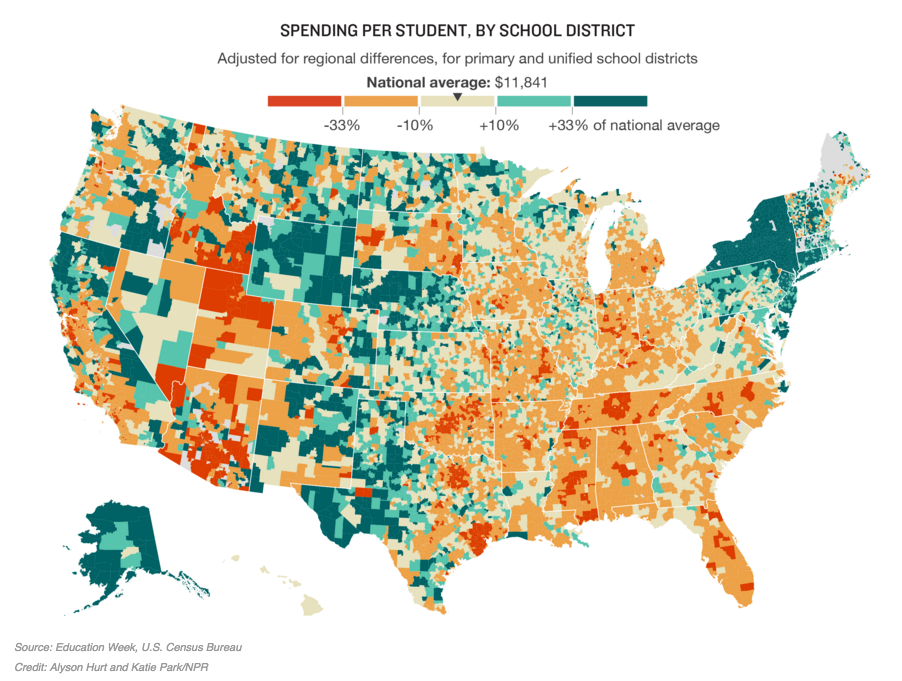 Image via flickr/dcjohn
Image via flickr/dcjohnThe Texas Supreme Court today upheld the state's public school financing system as constitutional, despite legal challenges from Texas school districts that argued the system fails to provide adequate resources.
At the same time, the court called on state lawmakers to enact "top-to-bottom" reforms to the school funding system.
"Our Byzantine school funding ‘system’ is undeniably imperfect, with immense room for improvement," Justice Don Willett wrote, according to the Texas Tribune. "But it satisfies minimum constitutional requirements."
It’s not the first time such a case has been before the court, but it was the largest, with more than 600 districts suing the state in multiple lawsuits for what they call an unconstitutional system. This particular lawsuit came about after deep cuts to the state education budget in 2011 and actually represents several different challenges.
In one of several school district lawsuits filed in 2011, 64 Texas school districts sued state officials and claiming the funding formulas did not match need in a state with a rapidly growing and diversifying student population. "The State has not made any effort to ensure that the existing weights and adjustments actually are related to the true cost of meeting the State's own rising performance requirements for all students and all districts," read the petition.
Though much of the $5.4 billion cut in 2011 was later restored, districts still say the system is unfair and that, by underfunding schools, districts have to effectively impose a property tax to raise revenue.
In August 2014, District Court Judge John Dietz released a roughly 400-page opinion expanding on his earlier February 2013 ruling, largely agreeing with those districts. Then-Attorney General Greg Abbott appealed the case to the Texas Supreme Court but some hoped the legislature would address funding issue in the 84th session last year. Shortly after being elected governor, Abbott said in his State of the State address that it was "time to put school finance litigation behind us. It’s time to stop fighting about school finance and start fixing our schools." He later filed an amicus brief asking the state supreme court to send the decision back to the lower court.
In a recent story on school funding across the country, National Public Radio recalled another Texas finance case from 1973, which made it all the way to the Supreme Court of the United States. That case, San Antonio Independent School District v. Rodriguez, argued that local property taxes were an unfair way to fund schools because it created poor and wealthy districts, violating the equal protection clause used to declare segregated schools unconstitutional decades earlier.
But the U.S. Supreme Court, in a 5-4 decision, said it was not the federal government’s responsibility to ensure equal funding for schools.
Unlike that case, though, the current case in question argued not that the state constitution ensures equal funding, but rather, it ensures adequate funding. And the districts argue the status quo isn't adequate. The court disagreed with that line of constitutional reasoning.
To get a sense of what current per student funding levels are across the state, and across the country, check out NPR’s interactive map, created with regionally adjusted data from 2013.
The largest district in the state, Houston Independent School District, for example, spent $7,512 per student. Dallas Independent School District, the second largest district, spent $7,773 per student. And Cypress-Fairbanks Independent School District, the third largest in the state, spent $6,156. All three are well below the national average of $11,841 per student, and all three are part of the lawsuit.
Another analysis by the Austin-based Center for Public Policy Priorities showed that per-student spending in the state has remained relatively flat for a decade. The left-leaning think tank adjusted for inflation data from the Texas Education Agency and the Legislative Budget Board.
The report from CPP argues that school funding not only "fails to distribute funds equitably," but it falls far behind the needs of a growing student population that is increasingly economically disadvantaged. "While the overall student population has increased by 20 percent in the last 10 years," reads the report, "the economically disadvantaged student population grew by 40 percent."



